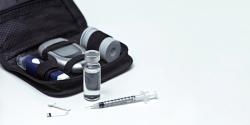© 2025 MJH Life Sciences™ and The Center for Biosimilars - Biosimilars, Health Economics & Insights. All rights reserved.
ESNO Releases Biosimilar Switching Guide for Nurses
Last week, the European Specialist Nurses Organisations (ESNO) released a document aimed at assisting nurses in the management of switching a patient from a reference biologic to a biosimilar.
Last week, the European Specialist Nurses Organisations (ESNO) released a document aimed at assisting nurses in the management of switching a patient from a reference biologic to a biosimilar. The guidelines specifically address the role of specialized nurse interactions with patients during the switching process and build upon existing European Commission guidelines for the healthcare community.
“Switching between similar biological medicines needs good management. Nurses play a crucial role in communicating with patients and providing support and reassurance, before, during, and after the switch,” said Ber Oomen, executive director at ESNO, in a statement.
Nurses have firsthand experience in leading the transition between a reference biologic and a biosimilar. In order to address the important interactions nurses have with patients, the guidelines include points around how to better inform and clearly communicate information about biologics and biosimilars.
Specifically, the guidelines contain talking points around the benefits of biosimilars such as increasing patient access to drugs, how to address patient questions or concerns if they are hesitant about switching, and exercising proper pharmacovigilance.
In addition, there are multiple case studies and real-world data included in the document that reinforce biosimilars' safe and effective use. “The quality, safety, and efficacy of biosimilar medicines are assessed and tested with comparability studies (including clinical trials) before the medicine is approved,” read the guidelines.
The guide was created by the ESNO community “based on similar initiatives across Eruope where switching programs are already in place.” For convenience, the authors also created a pocket dictionary for nurses that includes frequently asked questions from patients and how to address them.
“This is built on nurses’ many years of education, and their experience with patients in different therapies. It is a process that requires time, patience, and care… Patients need to know that their healthcare professionals understand the reasoning behind the switch and are confident that it is the right thing to do. This guide aims to achieve that,” said Oomen.



